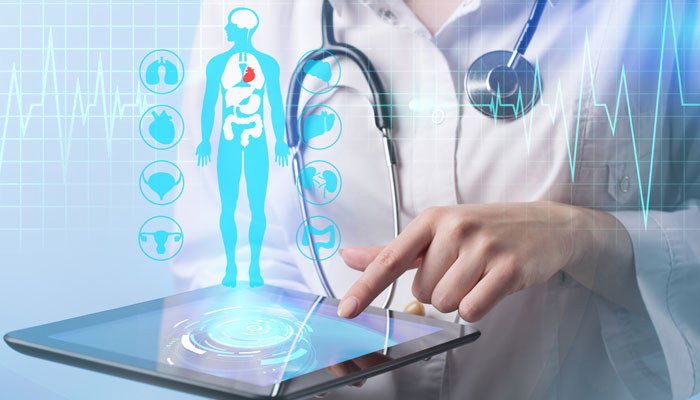The digital healthcare landscape is evolving at speed. Fuelled by rising consumer demands, rapid advancements in technology and more complex care needs, healthcare organisations are under pressure to deliver digital-first, seamless and connected experiences.
What trends are shaping the future of healthcare delivery? Which opportunities are ripe for innovation? And how can healthcare leaders ensure their organisations are equipped to take advantage of the emerging opportunities?
Trend 1. Rising data volumes create complexity
Over a decade ago, the world’s total data storage capacity was around 487 exabytes. By 2025, it’s estimated that we’ll be creating the same volume in under two days.
The healthcare sector is one of the biggest contributors to this data explosion, accounting for around 30% of the world’s data volume. The increased use of MedTech devices, apps and monitoring technologies means more data is flowing into healthcare organisations than ever before.
As data volumes continue to rise, so does our difficulty managing it. In 2022, healthcare organisations are searching for ways to integrate and harmonise their data to make meaningful connections that lead to actionable insights.
One solution, according to Gartner, is an enterprise data fabric, a way to continuously identify and connect data from disparate applications to discover unique, business-relevant relationships between the available data points.
Trend 2. AI adoption in healthcare accelerates
Artificial Intelligence (AI) has the potential to make care better, faster and more accessible for all. However, significant concerns about patient safety and a lack of quality data have slowed the progress of AI initiatives in healthcare.
That’s set to change – and we’re already making headway. McKinsey’s analysis into The State of AI in 2020 found that healthcare organisations were leading the way in AI investment, with 44% of healthcare organisations surveyed saying they have increased investment in AI in each major business function.
With healthcare catching up to other industries in AI maturity, data will be both a critical success factor and a barrier to the successful application of AI. What foundations do we need to get right before we can realise the full potential of AI technology?
Trend 3. Interoperability solutions unlock true power of data
According to a Sage Growth Partners report, 51% of healthcare executives say data integration and interoperability are the most significant barriers to achieving their strategic priorities related to data analytics.
This is due to the amount of data being created and the number of sources that data is flowing from. Medical devices, patient records, hospital databases and data lakes all house crucial data within the healthcare system. Without a way to connect these siloed data sources, accessing real-time data remains an uphill battle.
Standards such as Fast Healthcare Interoperability Resources (FHIR) and tools such as Application Programming Interfaces are closing this gap in the explosion of data and sources in the region, making data more accessible, computable and usable.
These two approaches will make synthesising data from multiple sources more achievable, providing the information needed to improve decisions and outcomes across the healthcare continuum.
Trend 4. Telehealth delivery moves to virtual care models
A global pandemic and rising consumer expectations have made telehealth a permanent fixture of the healthcare landscape. And it continues to increase, according to McKinsey, which reports 38 times higher uptake in 2021 compared to the pre-Covid baseline.
Healthcare professionals in the APAC and other regions are embracing this trend, seeing it as a valuable opportunity to improve access to healthcare. The HIMSS 2021 APAC Health CIO Report found that 88% of participants would continue to leverage connected health technologies following the pandemic.
Telehealth is shifting from an isolated mechanism to deliver care outside the hospital to a more holistic, integrated model of virtual care. As health professionals embrace this hybrid way of delivering care, the challenge becomes how to seamlessly blend remote and in-person care.
Trend 5. The rise of the Internet of Medical Things
Over the last decade, rapid advances in technology have led to the development of an increasing number of connected medical devices that can generate, collect, analyse and transmit data. Commonly referred to as the Internet of Medical Things (IoMT), these devices are revolutionising the way healthcare is delivered.
From connected glucose and heart monitors for patients with chronic diseases to ingestible sensors revolutionising disease diagnostics and monitoring, the IoMT enables more efficient, accurate and cost-effective healthcare delivery.
This proliferation of devices, while positive, is also causing a proliferation of data. Healthcare organisations are now faced with a “data deluge” that may prevent us from unlocking the value of this technology.
To understand more about these digital trends and how they are shaping healthcare, download the free InterSystems e-book “5 Trends Shaping the Future of Digital Health in 2022 | Asia Pacific”.




















